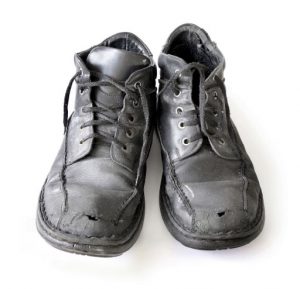Download a printable copy of this article (PDF 391KB)

- It’s about walking in their shoes.
- Avoid the sympathy trap, wherever possible.
- Ask questions to promote thinking.
- Build an extensive empathic vocabulary.
- Aim for an empathic class.
Given the thousands of anti-bullying programs that have been developed around the world, it’s little wonder that teachers have grown tired of implementing them for little return. It is clear that bullying isn’t beaten with a program, but through teaching, fostering and valuing empathy. Put simply, empathic young people don’t inflict power-driven negative and destructive behaviours upon others.
“Walk a mile in my shoes is good advice. Our children will learn to respect others if they are used to imagining themselves in another’s place”
– Neil Kurshan
In understanding empathy at a deeper level, it is important to begin from an agreed definition. Many of us have heard empathy explained through the metaphor of walking in another’s shoes. It’s actually very apt. But the emphasis we take is often on the wearing of shoes, whereas a true understanding of empathy focuses on the word another.
Empathy is about the other person – not about you. Expressions such as “I know exactly how you feel. This happened to me when I was at school” are fraught with danger for parents, carers and teachers. First, this statement is untrue. It is impossible to know what it is like for someone else. You know only what it was like for you with your own set of experiences, beliefs, social structures and capacities. This is sympathy rather than empathy.
Sympathy is about what we can feel or understand together. Of course, this doesn’t make behaving sympathetically a negative response. Sometimes it’s meaningful for somebody to acknowledge pain and to have an emotional response to it. In times where the pain is severe or intense, such as when there has been a death in the family an act of selfless sympathy is just what we need.
That said, a tendency towards acts of sympathy in all contexts is shielding our young people from the opportunities to learn empathic traits, respect, resilience and responsibility. In schools, sympathy can sometimes be seen in hollow apologies, empty promises and false platitudes. Assisting our young people to be more empathic is about asking the right types of questions to make them think … even if it means pondering some uncomfortable or inconvenient truths about the impact of their actions.
For most behavioural infractions in schools, including bullying, merely feeling sorry for the other person or parroting a well worn apologetic mantra shouldn’t be good enough. In these instances, encouraging empathic responses is preferred. Asking some tough questions of students engaging in bullying behaviours about the impact of their behaviour on others can help to increase empathic understanding. These questions can include:
- How do you think others are feeling about what happened?
- How might your parents or carers feel when they find out and what could you do about that?
- Who do you think is upset about your choices today?
While it is hoped that deep insights into understanding the ramifications of behaviour choices will arise from these questions, be prepared to be disappointed. A lack of emotional intelligence and vocabulary leads many children to think that physically hurting another student or screaming an obscenity at a teacher can result in somebody only feeling sad. Although this is clearly inappropriate, many students still default to this most basic of behavioural descriptors.
Critical to our work in establishing the ability of students to empathise is the development of an extensive emotional vocabulary. This opens up a sophisticated understanding that beneath sadness there is annoyance, upset, fear, fury, embarrassment, despondency and disappointment. Equally, beneath happiness there is delight, pride and being impressed. Each applies to circumstances differently and truly empathic people can distinguish the right word for the right occasion and for the right people.
This refers to a level of cognitive empathy that most students are quite capable of achieving. While there may be challenges for some students in developing intuitive empathy, it is entirely possible to develop the knowledge level that striking someone with an implement will cause that person to feel hurt or angry. While some students may not intuitively notice this through facial expressions or nonverbal responses, they can know this as the outcome of a simple cause-effect behaviour. This is critical knowledge as it can be helpful in growing the social skills for participating fully in society.
The empathic classroom is the cohesive classroom, taking the teacher out of the role of requiring to catch students doing the wrong thing and dragging them, often kicking and screaming, to responsibility. Empathic students begin to solve problems for themselves. This view of empathy fosters the creative and collaborative capabilities that hallmark learners, workers and leaders of emerging 21st century civilisations. In the short term, it has the potential to reduce any teacher’s time allocation as a manager or controller of student behaviour.
I wouldn’t mind standing in those shoes.










